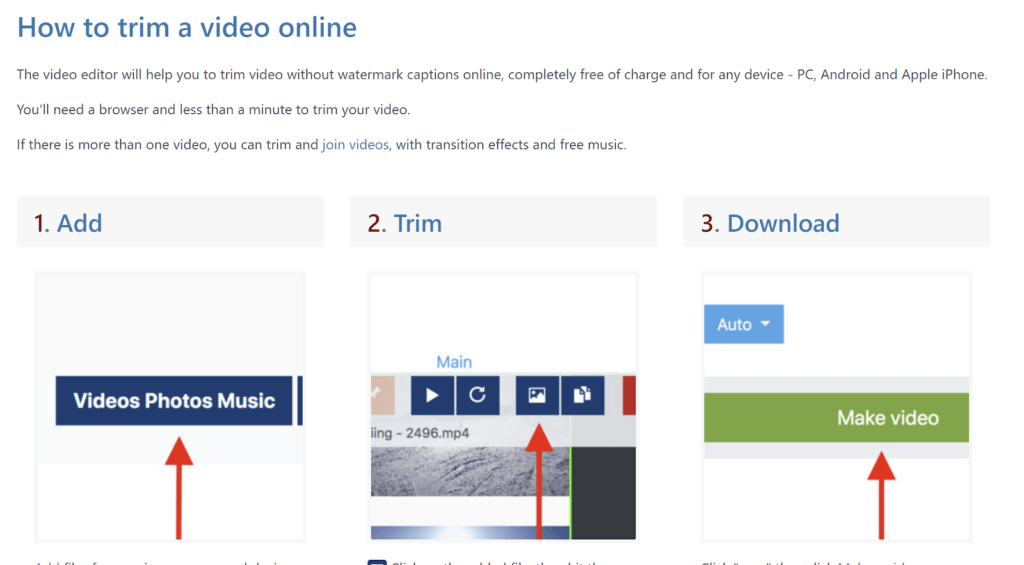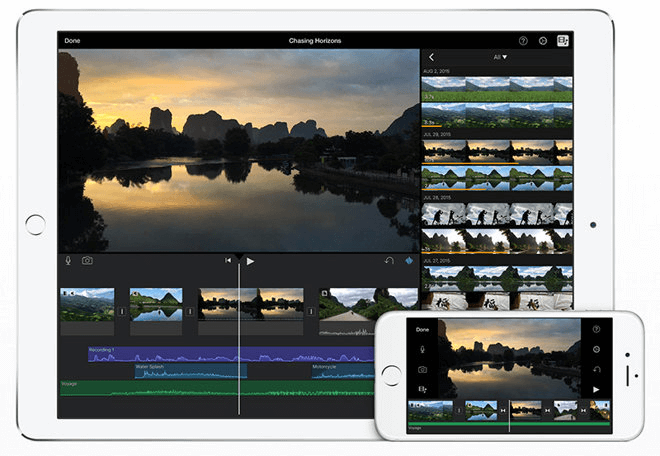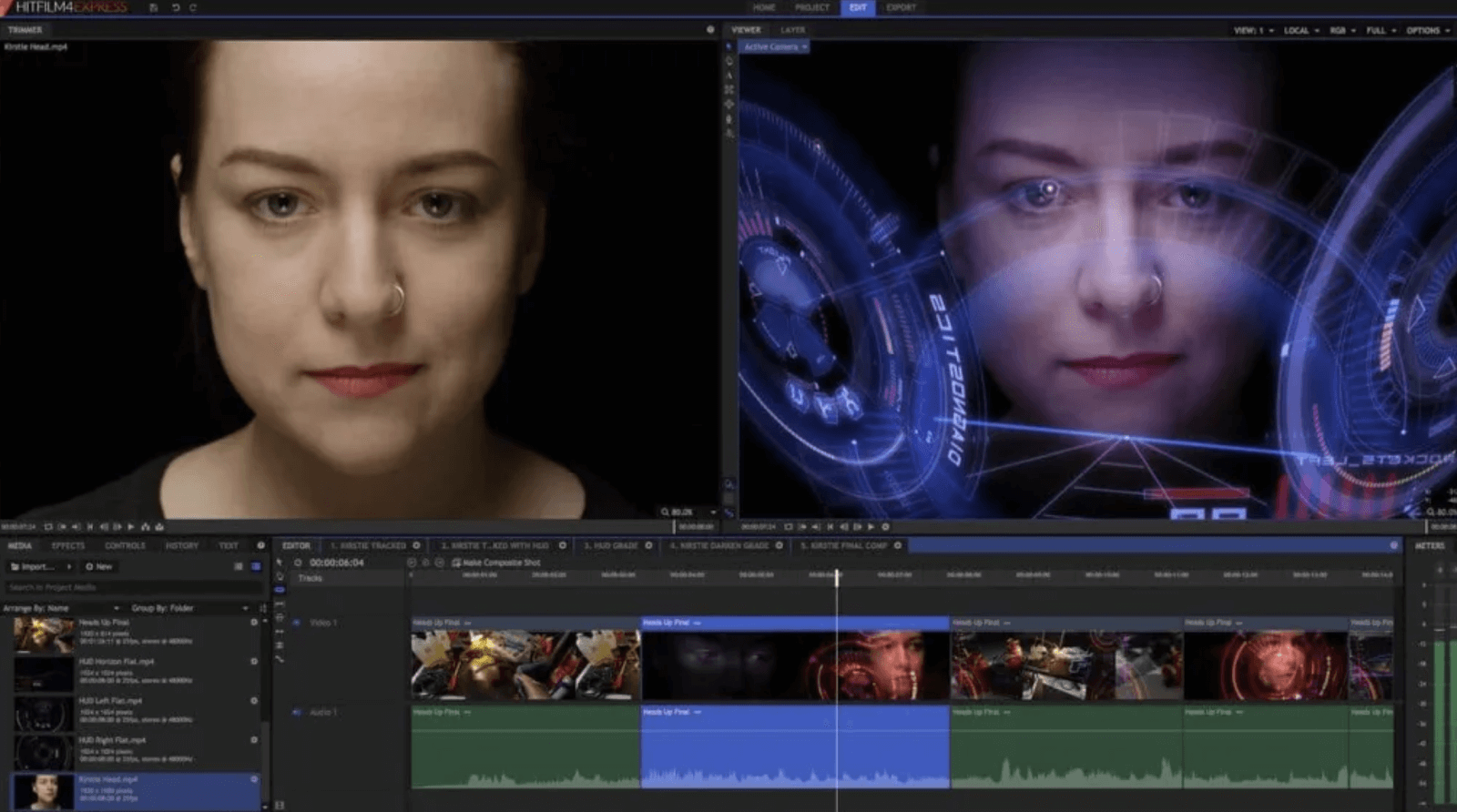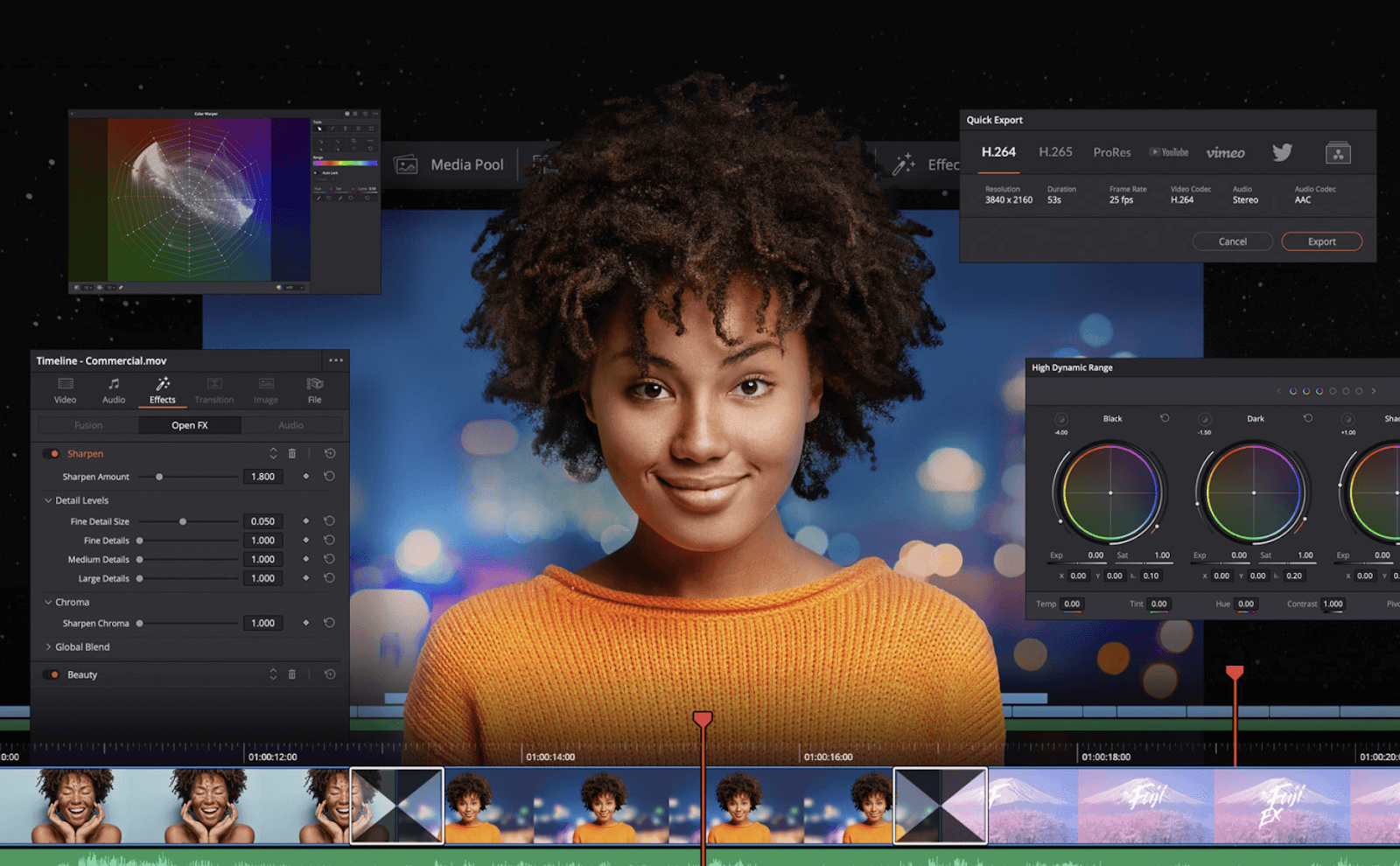Best Free Video Editing Software
Video editing software can range from simple drag and drop to complex 3D environment and effect manipulation. As such, the features and skills required vary with the software. For free video editing, there are many choices, suitable for different use cases. Some users want simple interview-style videos or product demonstrations. Others want 3D effects tools. Most importantly, you want to be able to best take advantage of the features available. With the right information, you can balance your skill and requirements to make the right choice.
The best free video editors we will be exploring are:
Best Video Editing for Each Need
We will start with a basic overview of top free options for video editing, then dive into what uses each software is best for.
| Ease of Use | Best OS | trScore | Browser Only | Biggest Pro | Biggest Con | |
| Movie Maker Online | Very Easy | PC | N/A | ✓ | Simple and Easy to Use | Very Basic Features |
| iMovie | Easy- Moderate | iOS | 8.7/10 | X | Great Render Speed | Poor on non-iOS |
| Lightworks | Moderate | PC, MacOS, Linux | 8.9/10 | X | Balance of Features and Ease of Use | 720p Export Limit in Free Version |
| Hitfilm Express | Moderate- Advanced | PC, MacOS, | N/A | X | 3D Graphics and Effects | Learning Curve |
| DaVinci Resolve Free | Advanced- Professional | MacOS, Windows, Linux | 8.4/10 | X | Incredible Feature Set | Skill Curve, Slow Render Speed |
With this overview in mind, explore the in-depth descriptions below. Keep in mind your experience level and use case to make the right choice.
In-browser, Easy to use, Basic Software
Movie Maker Online: This is a great option for those with limited experience in video editing. The website will walk you through basic options like trimming, snipping, and rotating video clips. Movie Maker used to be standard on PC but has since become a browser-only tool. This is perfect if you want to avoid a software download, or are unsure which device you will be working from.

The software may be a little strange to those with video editing experience. The UI is different from the industry standard but is designed around ease of use. Simple interview videos, screen recordings, and compilations will come out well. The transitions are rather basic. This can give videos a slide-show feel.
Bottom Line:
If you want to make simple videos by snipping and reorganizing your recordings, this is an option for you. Even the most basic functions have instructions built-in. There is a library of free-stock music and images. For beginner users with a simple need, look no further than this online video editor.
The Simple Choice for Most Mac Users
iMovie: If you use Apple products, and don’t need very advanced features, this will probably be the choice for you. The templates, drag-and-drop formatting, and transitions are very well made. iMovie will help you create a much more professional-looking product than Movie Maker Online.
This software is for people shooting with one camera only. Unlike some options below, there is no multicam or 360 camera support. While it can be downloaded onto PC, you lose many of the optimization benefits and polish that comes with Apple integration.

iMovie is great for making Youtube videos, product demonstrations, and social content. The latter is especially true with iMovie’s cross-platform mobile functionality. iPad and iPhone users can get a version of iMovie on the go with their mobile devices. For vloggers, social media influencers, and anything filmed from a phone, this will be invaluable. Facebook, Instagram, and Twitter formatting are easy. Filters allow you to match the style of your social media. Video previews will run on mobile apps
When rendering, iMovie is incredibly well optimized with Mac OS. This will mean shorter loading times and less risk of file corruption. Exporting and uploading will be quick and easy.
Bottom Line:
For Mac users, this will likely be the best for all but the most advanced cases. The great optimization and 4k support and strong positives for iMovie. For its features, it is very easy to use. This will work well for a huge array of use cases.
More Features for Intermediate Users
Lightworks: Getting into the more advanced options, Lightworks is a great balance of features and usability. Features like 360 cam editing and multicam support are included in this free too. This can not be said for the simpler options so far. This could be invaluable to a realtor, creating 3D tours, or a physical product video shot from several angles.
With these more advanced features comes more difficulty. There is a fantastic community forum to help guide users. There is also a series of tutorial videos specific to Lightworks.

Transitions and introductions will look better. You will have access to a greater library of resources. This will work well if you have a PC and do not want iMovie but need more complex features than Movie Maker Online.
There is a resolution limit some users may find problematic. Lightworks free only supports up to 720p exporting. If you need HD or 4k video, this will not be possible without paying.
Bottom line:
Lightworks balances feature breadth and ease of use. This is mid-tier software that will do moderate jobs very well. If its resolution limit is not an issue, this tool can be a great choice.
Particle and Graphic Effects, 3D Video Editing, for More Advanced Users
Hitfilms Express: This is the free variety of Hitfilms Pro. If you want graphics, particle effects, explosions, or anything similar, this will be a strong candidate. Hitfilms includes a large effects library in the free option. This can range from a muzzle blast to an Iron Man-style simulated heads-up display.
In terms of ease of use, this is the second most advanced on our list. The tutorials do a good job but Hitfilms Express lacks the forums of Lightworks.

If you are making amateur films, or want effects in YouTube series, this will help. For specific use-cases, like “I want a gunshot effect,” there are detailed video tutorials available. These effect presets must be purchased as outside packages. Others, like lighting and electricity, are free.
If you have a project in mind, explore their features page, and see if you can do it for free. You can also try many of the paid add-ons, with the caveat of a watermark appearing on your end product.
Hitfilms offers all of the basic video editing features as well. The software includes fantastic workflow management tools. Color-coded timelines, queue management, and personalized playback will help organize your project.
Bottom Line:
If you want some of the complex 3D effects that are rare in free tools, take a look at Hitfilms. There is a chance you will be able to do your project for free. If not, the pricing is relatively inexpensive, especially if you only need one type of effect. Other options may make you pay for a suite, where Hitfilms is more a la carte. The skill curve is pretty high, but the features are strong to back it up.
Top-of-the-line Features for Experienced Videographers
DaVinci Resolve: This product is a professional-tier videography studio for advanced users. The free version is a way for people to learn this incredible software. People base their careers on experience with DaVinci. If the 280+ page manual doesn’t bother you then this can be a powerful tool.

This software offers video editing tools like an advanced color alteration tool. The full suite includes audio editing and compositing software. You will be able to add sound effects and adjust aspect ratios with ease. There are motion graphics and post-production features. DaVinci Resolve has won awards for its features. This professional video tool was used in the production of 13 Oscar-nominated films last year.
Bottom Line:
For those who have the skill or interest in advanced videography, DaVinci Resolve will work well. If you want to learn an industry-standard tool, this free option would be a good teacher. Advanced features and functionality will make incredible products if you can make use of them
Paid options and Marketing Tools
If you will be using video editing software for a series of related promotional videos, consider exploring video marketing tools. Those will allow you to create short videos that match your brand style to support sales.
For more information on paid video editing software, check out these Top Rated video editing software. Use these products if you want to build your skills in professional software while creating amazing video products. They would be more useful than a free option for advanced movie-making, fully cinematic commercials. trailers, and other complex tasks.
Was this helpful?
